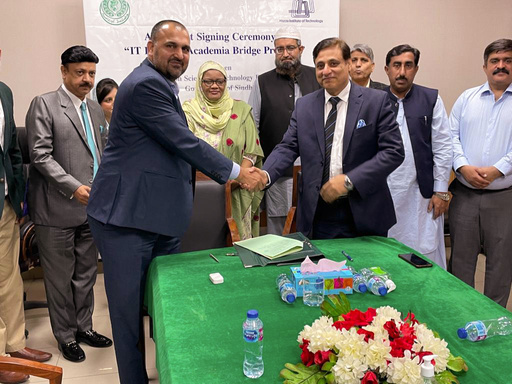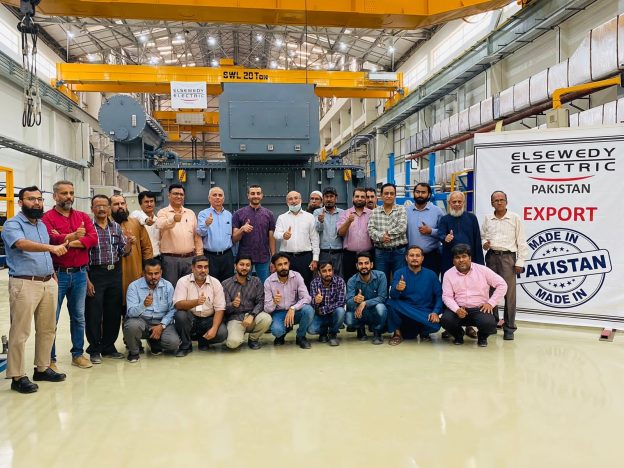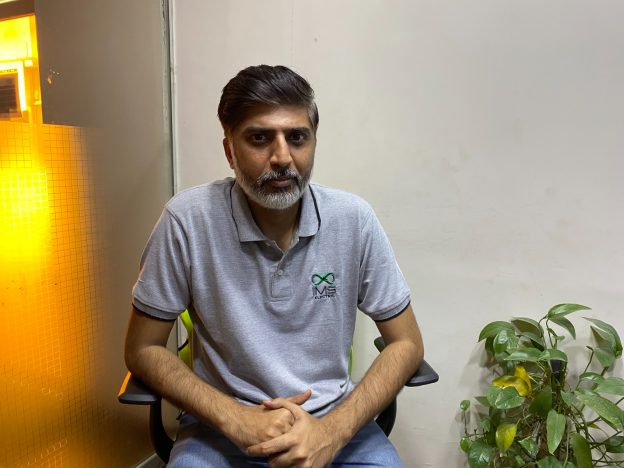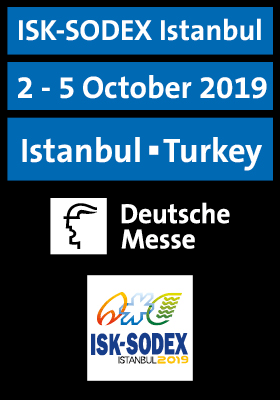Hazza Institute of Technology (HIT) and Sindh’s Information Science & Technology Department (ISTD) have committed to training 3,000 undergraduates under the IT Industry-academia bridge program in Sindh.
ISTD and HIT signed an agreement to launch the IT Industry-academia bridge program this month. The signing ceremony was attended by Ms. Tanzila Ume Habiba, the Special Assistant to the Chief Minister of Sindh on ISTD, Secretary, Mr. Asif Ikram, and HIT Managing Director, Azhar Iqbal Sindhu.
HIT is a joint project of the Ministry of Federal Education & Professional Training, Government of Pakistan under a Public-Private-Partnership program that aims to provide Vocational, Technical & Professional Education and Training, Skills Development, Career Counseling, and Job Placement to the citizens of Pakistan to enable them to earn their respectful livelihoods and alleviate poverty in Pakistan.
The IT Industry-academia bridge program is a collaborative effort between the ISTD, Sindh, and HIT to bridge the gap between academia and industry in the field of IT in Sindh.
The program aims to provide practical industry exposure and hands-on training to 3000 students in their 6th, 7th, and 8th semesters from public and private sector universities, in order to equip them with real-world experience and prepare them for the challenges of the IT industry.
The ISTD, Sindh, and HIT will work together to ensure the success of the program and create a talent pool equipped with the necessary skills and knowledge to drive innovation and growth in the IT sector.
Highlighting the importance of the initiative in Sindh, Ms. Tanzila Ume Habiba appreciated the efforts of HIT and the ISTD, Sindh for collaborating to launch this program.
Mr. Asif Ikram highlighted the role of IT skillsets in the economic growth of the country. He said that focusing on Human Capital development by investing in youth will bring a drastic change in the job scenario of the country. And, IT is the only sector that could bring forex inflow to the country. A country with more than 60% demographic balance in the favour of youth may result in economic stability, if the youth is trained in the IT field. ‘Academia-Industry Bridge Program will fetch more job opportunities for the youth onshore as well as offshore.’ He expressed his commitment to continue with such kind of training programs in the future.
The agreement ceremony was a significant step towards achieving the goal of bridging the gap between academia and industry in the IT sector, he said.
It demonstrated the commitment of the ISTD, Sindh, and HIT to create a conducive environment for the growth of the IT industry in the region.
The purpose of this linkage is to identify important academia-industry bridge activities that can stimulate the likelihood of employability among students. We continue to invest with the goal of providing Vocational, Technical & Professional Training, Skills Development, Career Counseling, and Job Placement to the residents of Sindh to enable them to earn their respectful livelihoods and alleviate poverty in Sindh.
HIT Managing Director, Azhar Iqbal Sindhu, expressed his enthusiasm for the program stating it is a significant milestone in the company’s efforts to contribute to the development of the IT industry in Sindh.
Bridging the gap between the IT industry and academia is crucial for the development and growth of the industry, says a press release. The industry needs a workforce that is equipped with the latest skills and knowledge to meet the constantly evolving demands of the market.
The efforts of ISTD and HIT will create a talent pool, equipped with the necessary skills and knowledge to drive innovation and growth in the IT sector.
Program launched to train 3,000 undergraduates in Sindh










